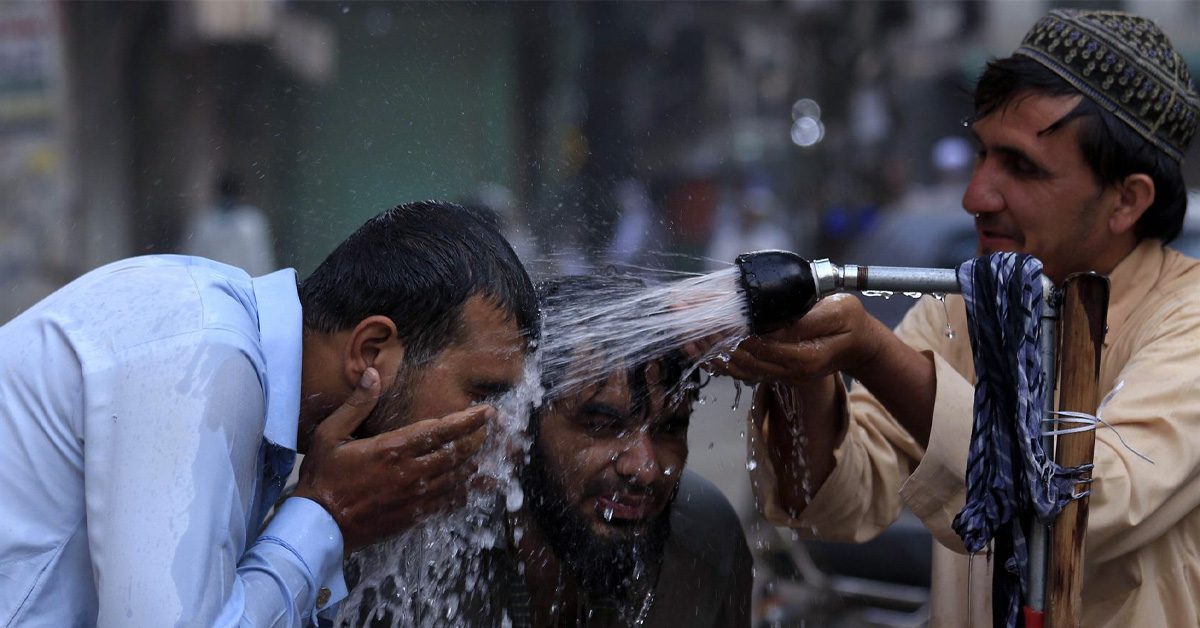In the sweltering summer of 2024, Pakistan experienced one of the most intense heat waves in recent history. The scorching temperatures and prolonged drought conditions sent ripples of concern across the nation, impacting millions of lives. As the heat wave in Pakistan continues to persist, this article delves into the causes, effects, and community responses to this climatic crisis, as well as exploring potential strategies to mitigate its impact.
The Severity of the 2024 Heat Wave in Pakistan
Pakistan is no stranger to high temperatures, but the heat wave of 2024 stands out for its intensity and duration. Temperatures soared well above 40 degrees Celsius in many regions, with some areas experiencing record-breaking highs. Cities like Karachi, Lahore, and Islamabad, as well as rural communities, bore the brunt of the heat, leading to increased stress on public health, agriculture, and energy infrastructure.
Several factors contributed to the severity of this heat wave. Climate change has been a key driver, causing global temperatures to rise and leading to more frequent and intense heat waves. Additionally, the El Niño phenomenon intensified weather patterns, exacerbating the already challenging conditions. Reduced monsoon rainfall further compounded the situation, leaving vast areas parched and vulnerable.
Impact on Public Health
The extreme heat had a profound impact on public health. Heat-related illnesses, such as heat stroke and heat exhaustion, became more prevalent, putting pressure on hospitals and medical facilities. Vulnerable populations, including the elderly, children, and those with pre-existing health conditions, were at heightened risk.
Many cities faced an increased mortality rate due to the heat wave. Overcrowded urban areas with limited green spaces and poor air circulation experienced higher temperatures, exacerbating the heat island effect. This prompted public health officials to issue heat advisories and recommend precautions, such as staying indoors during peak heat hours and staying hydrated.
Agriculture and Food Security
The agricultural sector, a cornerstone of Pakistan’s economy, felt the impact of the heat wave acutely. Crops like wheat, rice, and cotton suffered from water shortages and heat stress, leading to reduced yields and increased food insecurity. Livestock also faced challenges, with heat-related stress affecting animal health and productivity.
Farmers, who rely heavily on predictable weather patterns and irrigation, had to adapt to the changing conditions. Many struggled with water shortages, as rivers and reservoirs ran low, forcing them to rethink traditional farming practices. The economic ripple effects were felt across rural communities, impacting livelihoods and contributing to migration to urban areas.
Energy Infrastructure Under Stress
The relentless heat wave also strained Pakistan’s energy infrastructure. As temperatures rose, so did energy demand, with air conditioning and cooling systems working overtime. This surge in electricity consumption led to frequent power outages and load shedding, disrupting daily life and hampering economic productivity.
The reliance on fossil fuels for energy generation further complicated matters, as the high demand for cooling contributed to increased emissions, perpetuating the cycle of climate change. The energy crisis prompted calls for greater investment in renewable energy sources, such as solar and wind power, to mitigate future heat wave impacts.
Community Resilience and Government Response
Despite the challenges posed by the heat wave, Pakistan’s communities demonstrated remarkable resilience. Local organizations, NGOs, and volunteers played a crucial role in providing relief to those most affected. Water distribution points, temporary cooling shelters, and medical camps were set up in various cities to offer respite and support.
The Pakistani government also took steps to address the crisis. Heatwave response plans were activated, and public awareness campaigns were launched to educate people about heat-related risks and safety measures. Authorities collaborated with meteorological agencies to improve heat wave forecasting, enabling better preparation and response.
Mitigating Future Heat Waves
To mitigate the impact of future heat waves, Pakistan must focus on both immediate and long-term strategies. Investing in resilient infrastructure, such as improved water storage and distribution systems, is crucial to ensure water security during droughts. Additionally, urban planning should prioritize green spaces and sustainable cooling solutions to combat the heat island effect.
Transitioning to renewable energy sources is another key component of a comprehensive strategy. By reducing dependence on fossil fuels and promoting clean energy, Pakistan can lower its carbon footprint and help curb the factors driving climate change. This approach not only addresses the root causes of extreme weather events but also creates new economic opportunities in the renewable energy sector.
Furthermore, building climate resilience within the agricultural sector is essential. Farmers need access to education and resources to adapt to changing conditions, such as drought-resistant crops and efficient irrigation techniques. Collaboration between government agencies, agricultural experts, and local communities can foster innovative solutions to ensure food security.
Conclusion
The heat wave in Pakistan in 2024 was a stark reminder of the urgent need to address climate change and build resilience to extreme weather events. The human, economic, and environmental costs of such heat waves are significant, but the response from communities and the government demonstrates a capacity for resilience and adaptation.
By focusing on sustainable practices, renewable energy, and climate-resilient infrastructure, Pakistan can mitigate the impact of future heat waves and work toward a more sustainable and resilient future. While the road ahead may be challenging, the experiences of 2024 offer valuable lessons on how to navigate the heat and protect the most vulnerable among us.

